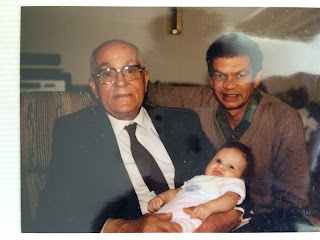Possessed by a demon
As he watched her stir her cup of tea, Neville Anderson knew his love of 51 years was back.
The Titirangi man had watched helplessly as the life of his once-active, social high school sweetheart ebbed away to Parkinson's disease.
Diagnosed 11 years ago, Christine relied on three pills, three hours daily to ease the chronic trembling. But while replenishing the depleted dopamine in her brain, the chemical messenger responsible for movement, there was little for the involuntary jerks or dyskinesia that her body would often make as it reacted to the drugs.
At times she could not talk or sit. Sometimes she could barely move, she said.
"It's like your body's possessed by a demon."
That was last year. Today, Christine Anderson is a completely different woman.
The 67-year-old is one of 51 movement disorder patients to have undergone deep-brain stimulation surgery after it became available in New Zealand in 2009.
The major surgery allows some patients to reduce their medication and limits symptoms but it's not a cure. Yet in the case of Christine Anderson, there's no better way to describe it.
She has cut her medication altogether.
On her worst days, Christine's life was reduced to a conversation with her husband in the morning followed by a slow, careful walk to the kitchen downstairs.
She would drink tea from a toddler's sippy cup and try to get to the dining table without knocking over her cereal bowl.
Christine broke her arm several times. A steep incline would force her to a running pace, and the only way to stop was to fall over.
She became more reclusive, fearing embarrassment. Even holding a conversation was a battle. Her only respite was to sleep - the only time she got any peace.
"I used to feel so terrible about the effect on Neville."
Neville felt helpless. "You basically lose your best mate. You just can't do anything. All I knew was it was going to get worse."
While some men may long for respite from the chatter of their wives, this is what Neville missed most. "That was the most frustrating. I would have to ask ‘yes or no? Thumbs up or down?' Now she wakes up in the mornings and sings."
Desperate for a solution, Christine had researched thoroughly to see if she might be a suitable candidate for DBS.
A strong response to medication is one of the key criteria neurologists look for. Dramatic scenes of Christine's dyskinesia at its worst were captured on camera as evidence. The couple can only laugh as they watch Christine struggle to sit still, her legs kicking wildly beneath her.
"You have to laugh or you'll cry," Neville said. "It's so pathetic, compared to what she can do now."
Christine was terrified of the thought of electrodes being placed into her brain, which is required to suppress the overactive cell clusters responsible for tremors. But she felt she had little choice.
It sounds like a scene from a horror movie: holes being bored into either side of the skull through which wires are inserted into the brain. The patient is kept awake initially.
"If someone grabbed you off the street and bored holes in your head and put a clamp on you, you would be terrified," Christine said.
But the six months of assessment and preparation left her incredibly calm. "They prepare you so well."
The anaesthesia helped too and, surprisngly, Christine's memories of the procedure are largely positive.
Parkinson's New Zealand fields a lot of queries about DBS, and says it has changed some people's lives.
"Before DBS surgeons would use something like a hot poker in the brain to burn bits of it. You can't undo that procedure," chief executive Deirdre O'Sullivan said. "DBS is far more sophistocated and the selection criteria is very stringent.
"Stastically New Zealand's very successful on the world stage in this type of surgery."
The surgery works by sending a constant stream of electric pulses through the wires to the brain from a small battery-operated box to calm the overactive cells.
The battery is stored inside a cavity below the collar bone. The wires tuck under the skin, travelling down from the skull, behind the ear and down the neck, Auckland neurologist Dr David McAuley said.
The nucleus targeted is just 13 millimetres long, about the size and shape of a small almond.
Suffice to say accuracy is crucial.
Stimulating the wrong part of the nucleus can result in depression for the patient. Hitting a blood vessel can end in stroke or death. The risk of a brain bleed or infection is 1 to 3 per cent. About one in 100 cases result in a major haemorrhage causing partial paralysis, McAuley says.
If the brain develops an abcess, the tracking wire has to be taken out again. This has happened twice in New Zealand. The patients were treated with high-level antibiotics. But because they had such good results for DBS, they each insisted to have the operation redone, says McAuley.
"So that's exactly what we did six months later and got a good result the second time and, fortunately, no further infection."
Last year 40 movement disorder patients were referred for DBS surgery but few met the criteria. Government funding is limited to 14 a year.
The youngest surgical patient in New Zealand was 11 years old.
Christine suffered some tremors and seizures post-op and it took up to six months until the stimulation was at the right levels.
"Straight away I could talk and I could get up and walk like an orang-utan," she said. "Every time they readjust you, the two sides of your brain separate out and it can be a few weeks before they work together properly.
"Once they turned it up to high and I was flinging my arms around and bouncing off the walls."
Last year Christine got on a plane for a holiday in Queensland. It was the first time she had used public transport in years.
But she says the biggest change has been the small things - cooking dinner, gardening, going out with friends, shopping and simply having a conversation. "It is a miracle. It may be a human-made miracle but it is a miracle."
Impressed by the success of DBS here and abroad, Dr McAuley and his team have pushed to see Government funding increased up to 20 patients a year, but it will take some persistence.
McAuley sees potential in the surgery not only for movement disorders but eventually for Tourette's, epilepsy and even some mental illness.
While Tourette's treatment is offered in Australia, Kiwi patients are caught in a catch-22. Where deep-brain stimulation patients could once get funding for treatment there, because it's offered here, the funding is no longer available. An application to treat Tourette's patients here was recently declined. About one in 1000 children are diagnosed with the syndrome.
For Neville and Christine, the real impact of McAuley's work didn't hit home until Neville saw his wife make a cup of tea. It wasn't in a sippy cup.
"I realised, I have my wife back.".








Comments
Post a Comment